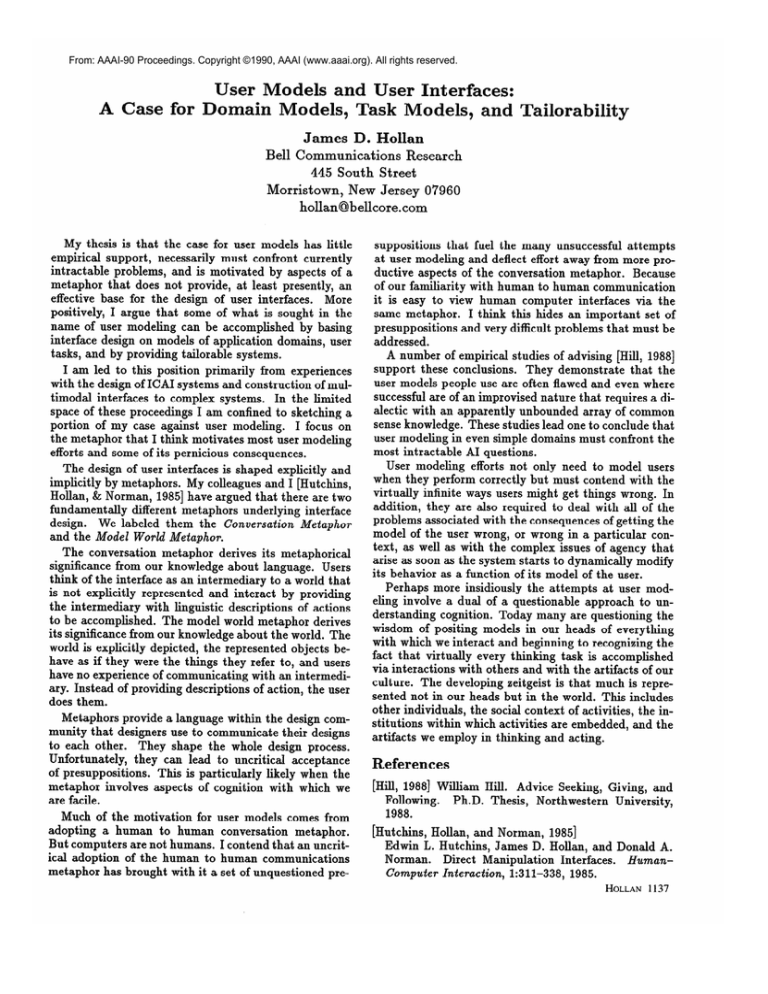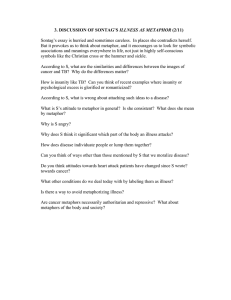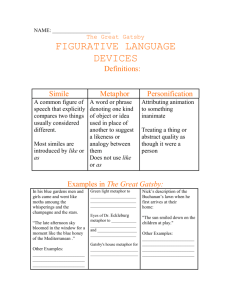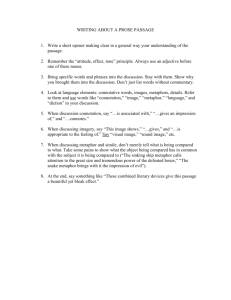
From: AAAI-90 Proceedings. Copyright ©1990, AAAI (www.aaai.org). All rights reserved.
User Models and User Interfaces:
A Case for Domain Models, Task Models, and Tailorability
James D. Hollan
Bell Communications Research
445 South Street
Morristown, New Jersey 07960
hollan@bellcore.com
My thesis is that the case for user models has little
empirical support, necessarily must confront currently
intractable problems, and is motivated by aspects of a
metaphor that does not provide, at least presently, an
effective base for the design of user interfaces.
More
positively, I argue that some of what is sought in the
name of user modeling can be accomplished by basing
interface design on models of application domains, user
tasks, and by providing tailorable systems.
I am led to this position primarily from experiences
with the design of ICAI systems and construction of multimodal interfaces to complex systems.
In the limited
space of these proceedings I am confined to sketching a
portion of my case against user modeling.
I focus on
the metaphor that I think motivates most user modeling
efforts and some of its pernicious consequences.
The design of user interfaces is shaped explicitly and
implicitly by metaphors.
My colleagues and I [Hutchins,
Hollan, & Norman, 19851have argued that there are two
fundamentally
different metaphors underlying interface
design.
We labeled them the Conversation
Metaphor
and the Model World Metaphor.
The conversation
metaphor derives its metaphorical
significance from our knowledge about language.
Users
think of the interface as an intermediary to a world that
is not explicitly represented and interact by providing
the intermediary
with linguistic descriptions of actions
to be accomplished.
The model world metaphor derives
its significance from our knowledge about the world. The
world is explicitly depicted, the represented objects behave as if they were the things they refer to, and users
have no experience of communicating
with an intermediary. Instead of providing descriptions of action, the user
does them.
Metaphors provide a language within the design community that designers use to communicate
their designs
to each other.
They shape the whole design process.
Unfortunately,
they can lead to uncritical acceptance
of presuppositions.
This is particularly likely when the
metaphor involves aspects of cognition with which we
are facile.
Much of the motivation for user models comes from
adopting a human to human conversation
metaphor.
But computers are not humans. I contend that an uncritical adoption of the human to human communications
metaphor has brought with it a set of unquestioned pre-
suppositions that fuel the many unsuccessful attempts
at user modeling and deflect effort away from more productive aspects of the conversation metaphor.
Because
of our familiarity with human to human communication
it is easy to view human computer interfaces via the
same metaphor.
I think this hides an important set of
presuppositions and very difficult problems that must be
addressed.
A number of empirical studies of advising [Hill, 19881
support these conclusions.
They demonstrate
that the
user models people use are often flawed and even where
successful are of an improvised nature that requires a dialectic with an apparently unbounded array of common
sense knowledge. These studies lead one to conclude that
user modeling in even simple domains must confront the
most intractable AI questions.
User modeling efforts not only need to model users
when they perform correctly but must contend with the
virtually infinite ways users might get things wrong. In
addition, they are also required to deal with all of the
problems associated with the consequences of getting the
model of the user wrong, or wrong in a particular context, as well as with the complex issues of agency that
arise as soon as the system starts to dynamically modify
its behavior as a function of its model of the user.
Perhaps more insidiously the attempts at user modeling involve a dual of a questionable approach to understanding cognition. Today many are questioning the
wisdom of positing models in our heads of everything
with which we interact and beginning to recognizing the
fact that virtually every thinking task is accomplished
via interactions with others and with the artifacts of our
culture. The developing zeitgeist is that much is represented not in our heads but in the world. This includes
other individuals, the social context of activities, the institutions within which activities are embedded, and the
artifacts we employ in thinking and acting.
References
[Hill, 19881 Will’lam Hill. Advice Seeking, Giving, and
Following.
Ph.D. Thesis, Northwestern
University,
1988.
[Hutchins, Hollan, and Norman, 19851
Edwin L. Hutchins, James D. Hollan, and Donald A.
HumanNorman.
Direct Manipulation
Interfaces.
Computer
Interaction,
1~311-338, 1985.
HOLLAN
1137







